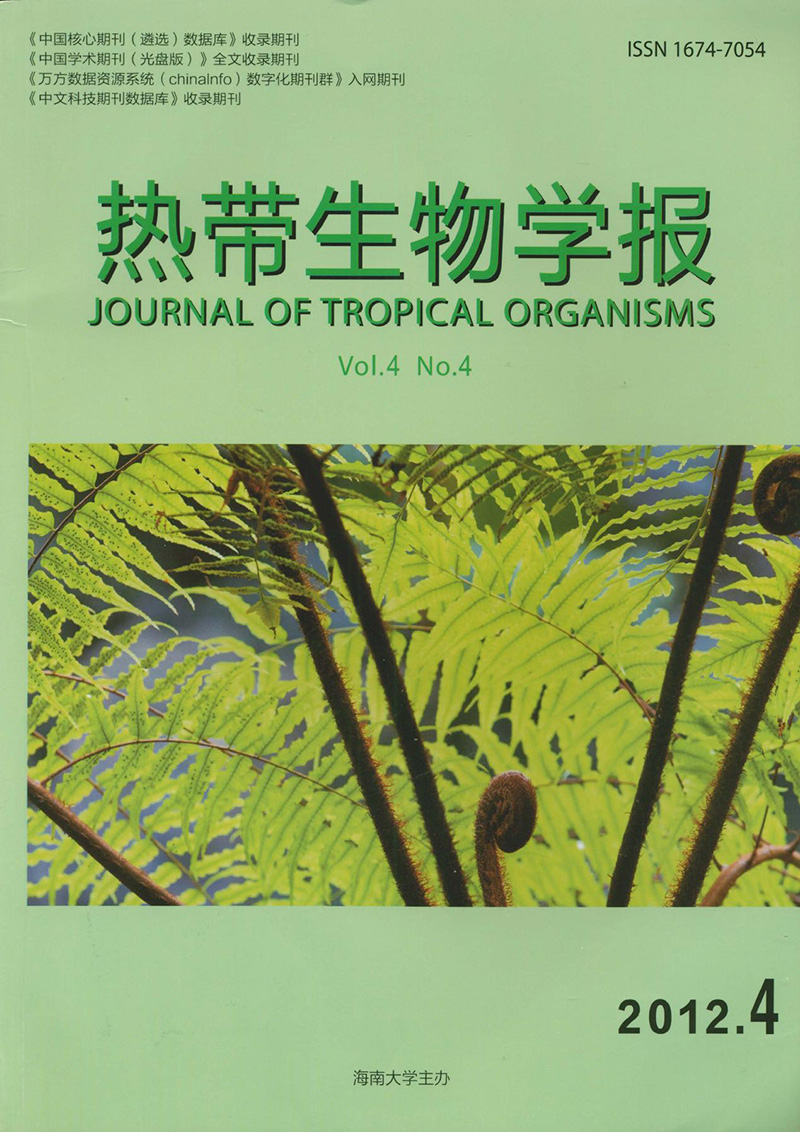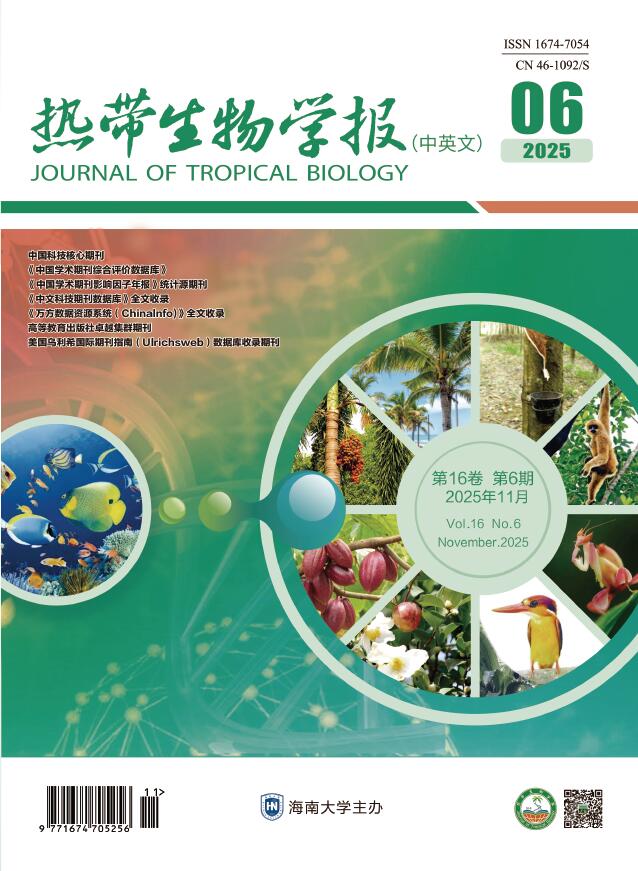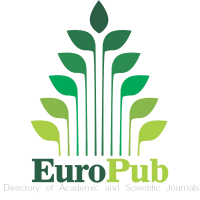2012 Vol. 3, No. 4
column
2012, 3(4): 293-297.
doi: 10.15886/j.cnki.rdswxb.2012.04.013
Abstract:
Banana is the most important tropical fruit.In recent years the outbreaks of banana Fusarium wilt have great negative impact on banana production.The study of genetic diversity of banana will provide support to genetic improvement of banana for resistance to Fusarium wilt.Seven banana varieties were used as sequencing materials,and 2 non-coding chloroplast DNA sequences(Intron sequence of rpl16 gene and intergenic sequence of psaA-ycf3 genes) in these varieties were amplified by PCR,cloned by TA,sequenced and analysed by bioinformatics to study the genetic diversity of banana.Neighbor joining method was used to establish phylogenetic tree and relative genetic distance measured.Results showed that Baxi banana had different degrees of genetic diversity as against the other 6 wilt-resistant banana varieties but the difference was not significant.
Banana is the most important tropical fruit.In recent years the outbreaks of banana Fusarium wilt have great negative impact on banana production.The study of genetic diversity of banana will provide support to genetic improvement of banana for resistance to Fusarium wilt.Seven banana varieties were used as sequencing materials,and 2 non-coding chloroplast DNA sequences(Intron sequence of rpl16 gene and intergenic sequence of psaA-ycf3 genes) in these varieties were amplified by PCR,cloned by TA,sequenced and analysed by bioinformatics to study the genetic diversity of banana.Neighbor joining method was used to establish phylogenetic tree and relative genetic distance measured.Results showed that Baxi banana had different degrees of genetic diversity as against the other 6 wilt-resistant banana varieties but the difference was not significant.
2012, 3(4): 298-304.
doi: 10.15886/j.cnki.rdswxb.2012.04.004
Abstract:
The GA signaling pathway is regulated by the DELLA proteins.A cassava nucleotide with high sequence homology to Arabidopsis thaliana GAI(AtGAI) was identified in the JGI database with the NCBI BLAST program.This nucleotide,named MeGAI,has a full length of 1 857 bp and contained genomic coding sequences.Sequence comparisons between the MeGAI sequence and all of DELLA proteins in Arabidopsis indicated that MeGAI also has similar conserved domains to the DELLA proteins of the Arabidopsis,such as DELLA domain,VHYNP domain,POLY(S /T) domain,NLS domain,VHVID domain,leu zipper domain,GRAS domain.All these domains indicted that MeGAI is an ortholog of AtGAI.Analysis of expression patterns of this gene in response to drought stress treatment showed that this gene is down regulated.Moreover,analysis of the expression patterns of the GA20ox gene,a key gene on GA biosynthesis process,indicated that the GA20ox gene has similar expression patterns to MeGAI.All these results give the clues to possible involvement of GA signal in resistance to drought stress.
The GA signaling pathway is regulated by the DELLA proteins.A cassava nucleotide with high sequence homology to Arabidopsis thaliana GAI(AtGAI) was identified in the JGI database with the NCBI BLAST program.This nucleotide,named MeGAI,has a full length of 1 857 bp and contained genomic coding sequences.Sequence comparisons between the MeGAI sequence and all of DELLA proteins in Arabidopsis indicated that MeGAI also has similar conserved domains to the DELLA proteins of the Arabidopsis,such as DELLA domain,VHYNP domain,POLY(S /T) domain,NLS domain,VHVID domain,leu zipper domain,GRAS domain.All these domains indicted that MeGAI is an ortholog of AtGAI.Analysis of expression patterns of this gene in response to drought stress treatment showed that this gene is down regulated.Moreover,analysis of the expression patterns of the GA20ox gene,a key gene on GA biosynthesis process,indicated that the GA20ox gene has similar expression patterns to MeGAI.All these results give the clues to possible involvement of GA signal in resistance to drought stress.
2012, 3(4): 305-313.
doi: 10.15886/j.cnki.rdswxb.2012.04.005
Abstract:
WRKY is a plant-specific transcription factor that could be a key regulator in the stress response processes of castor bean(Ricinus communis L.).Consulting the published castor bean genome information,we corrected some gene annotation errors and successfully obtained castor bean RcWRKY14 gene by In silico cloning.Bioinformatic analysis showed that RcWRKY14 contains three introns,encoding a peptide of 318 amino acids,and that it is nuclear localized.RcWRKY14 encodes an unstable and hydrophilic protein with a theoretical molecular weight of 35.49 kDa,isoelectric point of 8.64,total average hydrophilic of-0.803,instability coefficient(II) of 46.88.The protein contains one WRKY domain with a pattern of WRKYGQK_X_13_C_X_5_C_X_23_H_X_1_H_.The conservative intron is located between site 199(K amino acid residue) and site 200(V amino acid residue) in the WRKY domain of RcWRKY14.The protein could be classified into subclass a under class II.Further analysis showed that a variety of hormone and stress-responsive cis-acting regulatory elements were found in the promoter region of RcWRKY14.Gene expression analysis showed that RcWRKY14 was expressed in castor bean leaves,flowers,endosperms and seeds,with the highest expression level in flowers,the lower in seeds and leaves and the lowest in the endosperms.
WRKY is a plant-specific transcription factor that could be a key regulator in the stress response processes of castor bean(Ricinus communis L.).Consulting the published castor bean genome information,we corrected some gene annotation errors and successfully obtained castor bean RcWRKY14 gene by In silico cloning.Bioinformatic analysis showed that RcWRKY14 contains three introns,encoding a peptide of 318 amino acids,and that it is nuclear localized.RcWRKY14 encodes an unstable and hydrophilic protein with a theoretical molecular weight of 35.49 kDa,isoelectric point of 8.64,total average hydrophilic of-0.803,instability coefficient(II) of 46.88.The protein contains one WRKY domain with a pattern of WRKYGQK_X_13_C_X_5_C_X_23_H_X_1_H_.The conservative intron is located between site 199(K amino acid residue) and site 200(V amino acid residue) in the WRKY domain of RcWRKY14.The protein could be classified into subclass a under class II.Further analysis showed that a variety of hormone and stress-responsive cis-acting regulatory elements were found in the promoter region of RcWRKY14.Gene expression analysis showed that RcWRKY14 was expressed in castor bean leaves,flowers,endosperms and seeds,with the highest expression level in flowers,the lower in seeds and leaves and the lowest in the endosperms.
2012, 3(4): 314-317.
doi: 10.15886/j.cnki.rdswxb.2012.04.021
Abstract:
The sequence polymorphisms of the second exon of major hiscompatibility complex(MHC) B-G of 18 individuals in Hainan Wenchang Chicken were detected by the method of PCR-SSCP and direct sequencing with primers which were designed based on the sequence of Gallus gallaus in GenBank.These chickens were grouped into 16 genotypes by PCR-SSCP.Sequencing detected 21 polymorphic sites,20 sites of which cause 16 amino acids sites to mutate among the individuals.The results indicated that the length of MHC B-G sequences in these individuals has no variation.Wenchang Chicken population has rich polymorphisms mainly in the amino acids,which are closely related with the diversity of MHC B-G antigen.
The sequence polymorphisms of the second exon of major hiscompatibility complex(MHC) B-G of 18 individuals in Hainan Wenchang Chicken were detected by the method of PCR-SSCP and direct sequencing with primers which were designed based on the sequence of Gallus gallaus in GenBank.These chickens were grouped into 16 genotypes by PCR-SSCP.Sequencing detected 21 polymorphic sites,20 sites of which cause 16 amino acids sites to mutate among the individuals.The results indicated that the length of MHC B-G sequences in these individuals has no variation.Wenchang Chicken population has rich polymorphisms mainly in the amino acids,which are closely related with the diversity of MHC B-G antigen.
2012, 3(4): 318-324.
doi: 10.15886/j.cnki.rdswxb.2012.04.006
Abstract:
Sugar cane is the most important sugar crop in China,and Hainan Province is one of the four major sugar cane producing areas.Arbuscular mycorrhizae(AM) are highly beneficial for the sugarcane in growth and stress resistance.Twenty samples of sugarcane rhizosphere soil were collected from 7 cities or towns in Hainan,from which a total of 31 AM fungi belonging to 6 genera were isolated by using Gendemann’s Wet-screening method.Of these AM fungi 19 were identified and described based on their main morphological characteristics and 12 were not yet identified.The identified AM fungi included 7 Acaulospora species,1 Archaeospora species,6 Glomus species,2 Gigaspora species and 4 Scutellospora species.Spore isolation from the samples showed that Glomus gave the highest isolation frequency among the 6 genera of AM fungi isolated and that Glomus rubiforme was isolated at the highest frequency among the 31 AM fungus species.
Sugar cane is the most important sugar crop in China,and Hainan Province is one of the four major sugar cane producing areas.Arbuscular mycorrhizae(AM) are highly beneficial for the sugarcane in growth and stress resistance.Twenty samples of sugarcane rhizosphere soil were collected from 7 cities or towns in Hainan,from which a total of 31 AM fungi belonging to 6 genera were isolated by using Gendemann’s Wet-screening method.Of these AM fungi 19 were identified and described based on their main morphological characteristics and 12 were not yet identified.The identified AM fungi included 7 Acaulospora species,1 Archaeospora species,6 Glomus species,2 Gigaspora species and 4 Scutellospora species.Spore isolation from the samples showed that Glomus gave the highest isolation frequency among the 6 genera of AM fungi isolated and that Glomus rubiforme was isolated at the highest frequency among the 31 AM fungus species.
2012, 3(4): 325-328.
doi: 10.15886/j.cnki.rdswxb.2012.04.002
Abstract:
Red root rot(Ganoderma pseudoferreum) is one of the major root diseases infecting rubber tree in Hainan.A field trial was arranged to control the red root rot of rubber tree with propiconazole 25% EC and 25% EW at different concentrations.The results showed that both propiconazole formulations had a good control of this disease.The propiconazole 25% EC gave higher control effect than the propiconazole 25% EW.The rubber root rot is well controlled with both formulations of propiconazole after three rounds of application.Of all the concentrations tested,propiconazole 25% EW diluted at 1:200-400 gave the best control of the red root rot with a control efficiency of more than 90%.
Red root rot(Ganoderma pseudoferreum) is one of the major root diseases infecting rubber tree in Hainan.A field trial was arranged to control the red root rot of rubber tree with propiconazole 25% EC and 25% EW at different concentrations.The results showed that both propiconazole formulations had a good control of this disease.The propiconazole 25% EC gave higher control effect than the propiconazole 25% EW.The rubber root rot is well controlled with both formulations of propiconazole after three rounds of application.Of all the concentrations tested,propiconazole 25% EW diluted at 1:200-400 gave the best control of the red root rot with a control efficiency of more than 90%.
2012, 3(4): 329-332.
doi: 10.15886/j.cnki.rdswxb.2012.04.003
Abstract:
Oncidium spp.are a new tropical orchid of great potential in Hainan since Hainan government had given priority to development of the tropical orchid industry in Hainan.Under cultivation facilities snails and slugs occur frequently and cause serious damage to Oncidium plants in Hainan.They have cause destructive damages to some poor-managed orchid gardens where Oncidium plants are 3-5 years old.The species,occurrence and damage of snails and slugs in protected cultivation of Oncidium in Hainan are introduced.An integrated method is proposed to control the snails and slugs,including blocking their pathway with physical separation(bowl with water,plastic bottle),toxic bait,chemical control,cultural control and biological control.
Oncidium spp.are a new tropical orchid of great potential in Hainan since Hainan government had given priority to development of the tropical orchid industry in Hainan.Under cultivation facilities snails and slugs occur frequently and cause serious damage to Oncidium plants in Hainan.They have cause destructive damages to some poor-managed orchid gardens where Oncidium plants are 3-5 years old.The species,occurrence and damage of snails and slugs in protected cultivation of Oncidium in Hainan are introduced.An integrated method is proposed to control the snails and slugs,including blocking their pathway with physical separation(bowl with water,plastic bottle),toxic bait,chemical control,cultural control and biological control.
2012, 3(4): 333-338344.
doi: 10.15886/j.cnki.rdswxb.2012.04.014
Abstract:
Ornamental ferns,with their diverse ecosystem types and shade-tolerance,account much in ornamental plants.Eleven ferns,i.e.Adiantum reniforme var.sinense,A.capillus-veneris,A.flabellulatum,Nephrolepis cordifolia,Dryopteris fuscipes,Platycerium wallichi,Athyrium yokoscense,Lygodium japonicum,Folium Pyrrosiae,Pteris semipinnata and Aleuritopteris argentea were introduced and cultured in the shelter.Most of them are evergreen and can overwinter and oversummer safely in Wuhan.Adiantum reniforme var.sinense,A.capillus-veneris and A.flabellulatum can germinate throughout the year.Nephrolepis cordifolia,Dryopteris fuscipes,Platycerium wallichii,Athyrium yokoscense,Lygodium japonicum,Pteris semipinnata,Aleuritopteris argentea can germinate in spring and autumn.No sori are found on Lygodium japonicum and Platycerium wallichii.
Ornamental ferns,with their diverse ecosystem types and shade-tolerance,account much in ornamental plants.Eleven ferns,i.e.Adiantum reniforme var.sinense,A.capillus-veneris,A.flabellulatum,Nephrolepis cordifolia,Dryopteris fuscipes,Platycerium wallichi,Athyrium yokoscense,Lygodium japonicum,Folium Pyrrosiae,Pteris semipinnata and Aleuritopteris argentea were introduced and cultured in the shelter.Most of them are evergreen and can overwinter and oversummer safely in Wuhan.Adiantum reniforme var.sinense,A.capillus-veneris and A.flabellulatum can germinate throughout the year.Nephrolepis cordifolia,Dryopteris fuscipes,Platycerium wallichii,Athyrium yokoscense,Lygodium japonicum,Pteris semipinnata,Aleuritopteris argentea can germinate in spring and autumn.No sori are found on Lygodium japonicum and Platycerium wallichii.
2012, 3(4): 339-344.
doi: 10.15886/j.cnki.rdswxb.2012.04.001
Abstract:
The epidermal structures of six species of Aspidiaceae were observed under light microscope.The results showed that their epidermal cells are irregular with their anticlinal walls undulate or sinuate.There are six types of stomatal apparatus,i.e.Polocytictype,Copolocytictype,Axillocytictype,Coaxillocytictype,Aisocytictype and Anomotetracytictype.The components of stomatal apparatus are polymorphic,and all the stomatal apparatuses only occur in the lower epidermis,and the stomatal indexes are similar.Raphides and monocrystals are visible in the upper and lower epidermal cells.But the six species of Aspidiaceae are different in the size of epidermal cells,trichome production,the size of stomata and stomata density and crystal types.
The epidermal structures of six species of Aspidiaceae were observed under light microscope.The results showed that their epidermal cells are irregular with their anticlinal walls undulate or sinuate.There are six types of stomatal apparatus,i.e.Polocytictype,Copolocytictype,Axillocytictype,Coaxillocytictype,Aisocytictype and Anomotetracytictype.The components of stomatal apparatus are polymorphic,and all the stomatal apparatuses only occur in the lower epidermis,and the stomatal indexes are similar.Raphides and monocrystals are visible in the upper and lower epidermal cells.But the six species of Aspidiaceae are different in the size of epidermal cells,trichome production,the size of stomata and stomata density and crystal types.
2012, 3(4): 345-348.
doi: 10.15886/j.cnki.rdswxb.2012.04.007
Abstract:
The structural features of gametophytes of Hypolepis punctata(Thund.) Mett.at the development stage are reported,and the culture method for the gametophytes is introduced,including water culture for spores at early stage and soil culture for gametophytes at the late stage.H.punctata gametophyte development includes spore germination,protonema development,chloronema development,rhizoid differentiation,formation of prothallial plate,and production of trichomes,juvenile prothalli and sex organs.The bearing of development of the gametophytes of H.punctata on the systematics is also discussed.
The structural features of gametophytes of Hypolepis punctata(Thund.) Mett.at the development stage are reported,and the culture method for the gametophytes is introduced,including water culture for spores at early stage and soil culture for gametophytes at the late stage.H.punctata gametophyte development includes spore germination,protonema development,chloronema development,rhizoid differentiation,formation of prothallial plate,and production of trichomes,juvenile prothalli and sex organs.The bearing of development of the gametophytes of H.punctata on the systematics is also discussed.
2012, 3(4): 349-352.
doi: 10.15886/j.cnki.rdswxb.2012.04.008
Abstract:
The fern Pyrrosia lingua was cultured artificially,and the whole development course of its gametophyte was observed and recorded.Its spores are monolete and bilateral,with their surface tuberculate;the germ filament develops 2-4 cells;young prothalli are dissymmetrically cordiform,mature prothallus cordate;the trichomes occur in the platellite,and the development of prothallus is of the Aspidium-type;the shape of basal cells of trichomes are diverse;sexual organs mature in about 60 days.
The fern Pyrrosia lingua was cultured artificially,and the whole development course of its gametophyte was observed and recorded.Its spores are monolete and bilateral,with their surface tuberculate;the germ filament develops 2-4 cells;young prothalli are dissymmetrically cordiform,mature prothallus cordate;the trichomes occur in the platellite,and the development of prothallus is of the Aspidium-type;the shape of basal cells of trichomes are diverse;sexual organs mature in about 60 days.
2012, 3(4): 353-356.
doi: 10.15886/j.cnki.rdswxb.2012.04.015
Abstract:
Stenochlaena palustris(Burm.) Bedd.was cultured to observe its gametophyte development,the whole course of which was recorded.A propagation method for Stenochlaena palustris(Burm.) Bedd.has then been established.
Stenochlaena palustris(Burm.) Bedd.was cultured to observe its gametophyte development,the whole course of which was recorded.A propagation method for Stenochlaena palustris(Burm.) Bedd.has then been established.
2012, 3(4): 357-360.
doi: 10.15886/j.cnki.rdswxb.2012.04.009
Abstract:
Cibotium barometz(Linn.) J.Sm.,a large fern,grouped in the Category Ⅱ of State Special Protected Plants was used as material to observe its gametophytic development by using optical microscope.The hairy filaments which were not observed by other researchers are observed and discussed emphatically,and a propagation method for juvenile sporophytes is described.C.barometz has a very high ornamental and medicinal value.The rate of sporophytes and its relationship with environmental conditions are discussed.
Cibotium barometz(Linn.) J.Sm.,a large fern,grouped in the Category Ⅱ of State Special Protected Plants was used as material to observe its gametophytic development by using optical microscope.The hairy filaments which were not observed by other researchers are observed and discussed emphatically,and a propagation method for juvenile sporophytes is described.C.barometz has a very high ornamental and medicinal value.The rate of sporophytes and its relationship with environmental conditions are discussed.
2012, 3(4): 361-364368.
doi: 10.15886/j.cnki.rdswxb.2012.04.010
Abstract:
The eggs of the fern Cibotium barometz(L.) J.Sm.were placed under light microscopy(LM) and transmission electron microscopy(TEM) to observe their development.At early stage of egg development the egg cell is well connected with the ventral canal cells through plasmodesmata,and contain numerous vesicles;the plastid contains obvious starch grains.With egg development,a separation cavity is formed between the egg cell and the ventral canal cell,but plasmodesmata still connects the egg and the ventral canal cell in the pore region.In the mid stage of egg development,an egg envelope is formed around the egg.In the mature stage of the egg development,the absence of egg envelope from the pore region where the egg and ventral canal cell were formerly interconnected produces a fertilization pore.The egg envelope is obviously thicker in the upper part of the egg than in the sides and lower part of the egg.The number of the vesicles is reduced in the egg cell and the plastids finally degenerate.At this stage,the nucleus produces numerous evaginations.
The eggs of the fern Cibotium barometz(L.) J.Sm.were placed under light microscopy(LM) and transmission electron microscopy(TEM) to observe their development.At early stage of egg development the egg cell is well connected with the ventral canal cells through plasmodesmata,and contain numerous vesicles;the plastid contains obvious starch grains.With egg development,a separation cavity is formed between the egg cell and the ventral canal cell,but plasmodesmata still connects the egg and the ventral canal cell in the pore region.In the mid stage of egg development,an egg envelope is formed around the egg.In the mature stage of the egg development,the absence of egg envelope from the pore region where the egg and ventral canal cell were formerly interconnected produces a fertilization pore.The egg envelope is obviously thicker in the upper part of the egg than in the sides and lower part of the egg.The number of the vesicles is reduced in the egg cell and the plastids finally degenerate.At this stage,the nucleus produces numerous evaginations.
2012, 3(4): 365-368.
doi: 10.15886/j.cnki.rdswxb.2012.04.011
Abstract:
The fern Drynaria roosii were cultured on four kinds of mediums(turf soil:sand=1:1,turf soil:loam:sand=1:1:1,loam:sand=1:1 and vermiculite:sand=1:1) added with or without basal fertilizer to observe the growth and development of D.roosii seedlings.The seedlings grew the fastest with dark green leaves and the highest fresh leaf weight when cultured on the medium turf soil+sand.The medium added with basal fertilizer improved the growth and development of the seedlings,with their root system being better than those cultured without additional basal fertilizer.The medium turf soil + sand(1:1) + basal fertilizer is hence optimal for D.roosii seedlings to grow.
The fern Drynaria roosii were cultured on four kinds of mediums(turf soil:sand=1:1,turf soil:loam:sand=1:1:1,loam:sand=1:1 and vermiculite:sand=1:1) added with or without basal fertilizer to observe the growth and development of D.roosii seedlings.The seedlings grew the fastest with dark green leaves and the highest fresh leaf weight when cultured on the medium turf soil+sand.The medium added with basal fertilizer improved the growth and development of the seedlings,with their root system being better than those cultured without additional basal fertilizer.The medium turf soil + sand(1:1) + basal fertilizer is hence optimal for D.roosii seedlings to grow.
2012, 3(4): 369-371.
doi: 10.15886/j.cnki.rdswxb.2012.04.016
Abstract:
The spores of Osmunda cinnamomea var.asiatica Fernald were cultivated with leaf mould substrate to obtain juvenile sporophytes.Morphogenesis of the initial 25 fronds of the juvenile sporophytes was well observed.The observations lead to discussion of the adaptability of the frond morphology to the environment,phylogenetic relationship among root,stem and frond,and related phylogenetic significance.
The spores of Osmunda cinnamomea var.asiatica Fernald were cultivated with leaf mould substrate to obtain juvenile sporophytes.Morphogenesis of the initial 25 fronds of the juvenile sporophytes was well observed.The observations lead to discussion of the adaptability of the frond morphology to the environment,phylogenetic relationship among root,stem and frond,and related phylogenetic significance.
2012, 3(4): 372-374.
doi: 10.15886/j.cnki.rdswxb.2012.04.017
Abstract:
Pteris vittata L.,a fern,was tissue cultured for spore germination under different durations of light and darkness at different temperatures and observed under light microscope.The spore of P.vittata L.is light required and has photodormancy.Light is the major environmental factor that influences spore germination.When the fern was cultured at 25 ℃ under the light of 14 hrs/day the spores germinated at a rate of(85.4±3.1)% while no spore germination occurred at the same temperature at the day 49 in dark culture,but when the latter was transferred to culture under the light condition,the spore germination rate increased to(81.4±5.6)%.The optimal temperature for spore germination ranged from 19.41 ℃ to 30.41 ℃ under the light.The spores began to germinate within 3-5 days and their germination were completed after 6-7 weeks.The temperature beyond the optimal range reduces the spore germination percentage.
Pteris vittata L.,a fern,was tissue cultured for spore germination under different durations of light and darkness at different temperatures and observed under light microscope.The spore of P.vittata L.is light required and has photodormancy.Light is the major environmental factor that influences spore germination.When the fern was cultured at 25 ℃ under the light of 14 hrs/day the spores germinated at a rate of(85.4±3.1)% while no spore germination occurred at the same temperature at the day 49 in dark culture,but when the latter was transferred to culture under the light condition,the spore germination rate increased to(81.4±5.6)%.The optimal temperature for spore germination ranged from 19.41 ℃ to 30.41 ℃ under the light.The spores began to germinate within 3-5 days and their germination were completed after 6-7 weeks.The temperature beyond the optimal range reduces the spore germination percentage.
2012, 3(4): 375-378.
doi: 10.15886/j.cnki.rdswxb.2012.04.018
Abstract:
The nest fern Neottoptis nidus was treated with shading at 6 levels(treatments A(56%),B(64%),C(70%),D(82%),E(88%),F(91%)) to observe its growth.The results showed that different levels of shading gave different effects on the relative content of chlorophyll,leaf length,leaf width,leaf number and plant death number.The shading effects on the relative chlorophyll content were in the order of treatments F>E>D>C>B>A;the effects on the leaf length were E>E>D>C>B>A;the effects on leaf width were E>D>C>F>B>A;the effects on the number of new leaves were D>C>B>F>E>A;the effects on nest fern mortality were A>C>B>E=D>F.Shading is positively correlated with the relative chlorophyll content.The shading effect on leaf length and width is changed in a curve way,and the treatment E is found most favorable for nest fern growth.The higher irradiance is beneficial to leaf number increase,but very strong sunshine may kill the fern.Shading at given levels can control the growth of new leaves and the number of leaves.It is concluded that the nest fern grows better under the shading above 88%.
The nest fern Neottoptis nidus was treated with shading at 6 levels(treatments A(56%),B(64%),C(70%),D(82%),E(88%),F(91%)) to observe its growth.The results showed that different levels of shading gave different effects on the relative content of chlorophyll,leaf length,leaf width,leaf number and plant death number.The shading effects on the relative chlorophyll content were in the order of treatments F>E>D>C>B>A;the effects on the leaf length were E>E>D>C>B>A;the effects on leaf width were E>D>C>F>B>A;the effects on the number of new leaves were D>C>B>F>E>A;the effects on nest fern mortality were A>C>B>E=D>F.Shading is positively correlated with the relative chlorophyll content.The shading effect on leaf length and width is changed in a curve way,and the treatment E is found most favorable for nest fern growth.The higher irradiance is beneficial to leaf number increase,but very strong sunshine may kill the fern.Shading at given levels can control the growth of new leaves and the number of leaves.It is concluded that the nest fern grows better under the shading above 88%.
2012, 3(4): 379-383386.
doi: 10.15886/j.cnki.rdswxb.2012.04.019
Abstract:
In order to study the genitic diversity and genetic structure of Bird’s nest fern(Neottopteris nidus) populations,fresh tender fronds of the Bird’s nest fern were collected and resorted to genomic DNA extraction through optimized RAPD reaction system by using different concentrations of CTAB and NaCl,different volumes of template DNA and primer.The improved CTAB DNA extraction method was the best to extract the genomic DNA of the fronds of the Bird’s nest fern.The optimum reaction system(25 μL) for RAPD amplification of the Bird’s nest fern DNA was listed as follows:The template DNA(50 mg·L-1)1.5μL;the primer(1 mmol·L-1) 1.5 μL;2×EasyTaq PCR SuperMiX 12.5 μL.
In order to study the genitic diversity and genetic structure of Bird’s nest fern(Neottopteris nidus) populations,fresh tender fronds of the Bird’s nest fern were collected and resorted to genomic DNA extraction through optimized RAPD reaction system by using different concentrations of CTAB and NaCl,different volumes of template DNA and primer.The improved CTAB DNA extraction method was the best to extract the genomic DNA of the fronds of the Bird’s nest fern.The optimum reaction system(25 μL) for RAPD amplification of the Bird’s nest fern DNA was listed as follows:The template DNA(50 mg·L-1)1.5μL;the primer(1 mmol·L-1) 1.5 μL;2×EasyTaq PCR SuperMiX 12.5 μL.
2012, 3(4): 384-386.
doi: 10.15886/j.cnki.rdswxb.2012.04.012
Abstract:
Drynaria fortune,a medicinal fern,is used as a kind of medicine to improve bone cell activities,prevent the toxic,reduce blood lipid and so on.The researches on D.fortune were mainly focused on the herbalism,pharmacological action,chemical constituents,physiology and artificial propagation.In recent years wild D.fortunei resources have sharply decreased as their living environment has been damaged due to their excessive collection driven by market demand.For conservation and sustainable utilization of the wild resources the methods for propagation of D.fortunei were reviewed based on available literature.Clearly,the tissue culture is the best way to propagate D.fortune in the future and problems arising from D.fortunei propagation are pointed out.
Drynaria fortune,a medicinal fern,is used as a kind of medicine to improve bone cell activities,prevent the toxic,reduce blood lipid and so on.The researches on D.fortune were mainly focused on the herbalism,pharmacological action,chemical constituents,physiology and artificial propagation.In recent years wild D.fortunei resources have sharply decreased as their living environment has been damaged due to their excessive collection driven by market demand.For conservation and sustainable utilization of the wild resources the methods for propagation of D.fortunei were reviewed based on available literature.Clearly,the tissue culture is the best way to propagate D.fortune in the future and problems arising from D.fortunei propagation are pointed out.
2012, 3(4): 387-392.
doi: 10.15886/j.cnki.rdswxb.2012.04.020
Abstract:
The varieties,distribution and ecological habits of ornamental Pteridophyta as well as its propagation methods and application in landscape architecture were reviewed based on available references and market survey.The problems arising from conservation and utilization of the ornamental Pteridophyta are analyzed,based on which 5 proposals for development and utilization of these ornamental plants and the prospect for their application in landscape architecture are made.
The varieties,distribution and ecological habits of ornamental Pteridophyta as well as its propagation methods and application in landscape architecture were reviewed based on available references and market survey.The problems arising from conservation and utilization of the ornamental Pteridophyta are analyzed,based on which 5 proposals for development and utilization of these ornamental plants and the prospect for their application in landscape architecture are made.



 Abstract
Abstract PDF 450KB
PDF 450KB



 Email alert
Email alert RSS
RSS